This is because the first character is R2L (right to left orientation as in asian languages), so next character becames at the begining (correct orientation):
First char:
الف
// actual orientation ←
Second char added at L
// add ←
B : الف
// actual orientation →
After this, B is L2R as usual in Europe, so next char (1/2) is added in the right orientation AFTER B:
// → add in this direction
B : 1/2 : الف
// actual orientation → (still)
You can easily test it by copy paste char and writting manually another, you will see how orientation changes depending of the char you inserted.
UPDATE:
what is my solution for this issue, because i made this example only to show what issue i was facing in making some big reports, where data is mix sometimes, it is L2R String and sometimes R2L. And i want to make a string in strictly this format.(
From this answer:
- Left-to-right embedding (U+202A)
- Right-to-left embedding (U+202B)
- Pop directional formatting (U+202C)
So in java, to embed a RTL language like Arabic in an LTR language like English, you would do
myEnglishString + "\u202B" + myArabicString + "\u202C" + moreEnglish
and to do the reverse
myArabicString + "\u202A" + myEnglishString + "\u202C" + moreArabic
See (for the source material)
ADD ON 2:
char l2R = '\u202A';
System.out.println(l2R + a + " : " + e +" : "+b);
OUTPUT:
الف : B : 1/2
